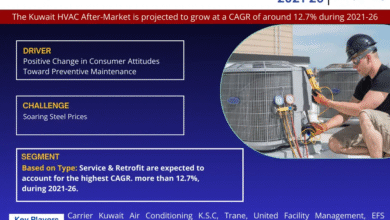
Introduction
In modern electrical systems, non-linear loads are increasingly common. Devices like computers, servers, LED lighting, variable frequency drives (VFDs), and UPS systems do not draw a smooth sinusoidal current. Instead, they create harmonics, which are distortions in the normal AC waveform. These harmonics can cause overheating in standard transformers, reduce efficiency, and significantly shorten their service life. To address this issue, engineers and designers use K-Rated transformers—specialized transformers designed to handle harmonic-rich environments safely and efficiently.
K-Rated transformers are particularly important in commercial buildings, data centers, hospitals, industrial plants, and renewable energy systems where electronic equipment constitutes a major portion of electrical loads. They ensure reliability, reduce downtime, and protect sensitive equipment.
The K-Factor is a numeric value defined by IEEE and ANSI standards. It measures a transformer’s ability to withstand the additional heating caused by harmonic currents. Standard transformers (K-1) are designed for linear loads and are not suitable for high-harmonic environments.
The K-Factor scale is as follows:
-
K-1 Transformers – Standard transformers for linear loads like motors and lighting.
-
K-4 / K-9 / K-13 Transformers – Suitable for moderate harmonic loads such as office electronics, small industrial machines, and commercial buildings.
-
K-20 / K-30 / K-40 Transformers – Built for heavy harmonic environments, including data centers, hospitals, factories with multiple VFDs, and other high-tech industrial systems.
The higher the K-rating, the more capable the transformer is at handling harmonics without overheating. Selecting the correct K-rated transformer is crucial to prevent premature insulation failure, voltage drop, or unexpected downtime.
What Does “K-Rating” Mean?
The K-Rating is a value defined by IEEE and ANSI standards that indicates a transformer’s ability to withstand harmonic currents without overheating.
-
K-1 Transformers – Standard transformers for linear loads.
-
K-4 / K-9 / K-13 Transformers – Suitable for moderate non-linear loads in offices and commercial buildings.
-
K-20 / K-30 / K-40 Transformers – Built for high harmonic environments, such as data centers, hospitals, and industrial automation.
How Does a K-Rated Transformer Work?
K-rated transformers manage harmonic currents using:
-
Oversized conductors to reduce heating.
-
Improved insulation systems to withstand additional stress.
-
Electrostatic shields to minimize noise and voltage spikes.
-
Special winding designs to reduce circulating harmonic currents.
These features allow the transformer to operate safely even when the load produces significant harmonic distortion.
Applications of K-Rated Transformers
-
Data Centers – Powering servers and IT equipment.
-
Hospitals – Ensuring safe operation of medical devices.
-
Commercial Buildings – Supporting offices, malls, and schools with heavy electronics.
-
Industrial Plants – Running VFDs, motors, and automation systems.
-
Renewable Energy Systems – Handling inverter-based harmonic loads.
Advantages of K-Rated Transformers
-
Protects against overheating caused by harmonics.
-
Extends the service life of the transformer.
-
Ensures reliable operation in harmonic-rich environments.
-
Protects sensitive electronic equipment.
-
Reduces downtime and maintenance costs.
How K-Rated Transformers Work
K-Rated transformers differ from standard transformers in their design and construction. The main features that allow them to handle harmonic currents effectively include:
-
Oversized Conductors – Thicker copper or aluminum windings reduce the heat generated by harmonic currents.
-
Improved Insulation Systems – Special insulation materials can tolerate the higher temperatures produced by harmonic currents, prolonging transformer life.
-
Electrostatic Shields – These shields reduce electrical noise and transient voltages, protecting connected equipment.
-
Special Winding Configurations – Designs such as separated or interleaved windings reduce circulating harmonic currents within the transformer, minimizing losses.
-
Enhanced Cooling – Some K-Rated transformers include advanced cooling systems to maintain optimal operating temperatures even under heavy harmonic loads.
By combining these features, K-Rated transformers operate safely in environments that would otherwise damage conventional transformers.
Applications of K-Rated Transformers
K-Rated transformers are essential wherever electronic equipment forms a significant portion of electrical loads. Typical applications include:
-
Data Centers – Servers, networking equipment, and storage systems draw non-linear currents that generate significant harmonics. K-Rated transformers prevent overheating and ensure uninterrupted operation.
-
Hospitals – Medical devices such as MRI machines, CT scanners, and other critical equipment require clean, reliable power. K-Rated transformers protect both the equipment and patient safety.
-
Commercial Buildings – Office buildings, malls, and schools with high concentrations of computers, printers, and LED lighting benefit from K-rated transformers.
-
Industrial Facilities – Factories with multiple VFDs, robotic systems, and automated machinery require transformers that can handle high harmonic loads without degrading performance.
-
Renewable Energy Systems – Solar inverters and wind turbines often produce harmonics that conventional transformers cannot handle. K-Rated transformers ensure reliable operation and long-term efficiency.
Advantages of K-Rated Transformers
The primary benefits of K-Rated transformers include:
-
Protection Against Overheating – By managing harmonic currents, these transformers prevent excessive heat buildup.
-
Extended Lifespan – Reduced stress on insulation and windings ensures longer operational life.
-
Efficient Power Delivery – They maintain voltage stability even in harmonic-rich environments.
-
Safety for Sensitive Equipment – Electronic devices connected to K-Rated transformers are less likely to fail due to voltage distortion or overheating.
-
Reduced Maintenance and Downtime – Fewer failures and less thermal stress lead to lower maintenance costs and more reliable operations.
Choosing the Right K-Rated Transformer
Selecting the correct K-Rating is critical. Engineers assess the type and number of non-linear loads, calculate expected harmonic currents, and then choose a transformer with the appropriate rating. Installing an undersized K-Rated transformer can lead to overheating, insulation failure, and costly downtime, while an oversized transformer may result in unnecessary capital expenditure.
Conclusion
In today’s world of complex electrical systems, where computers, VFDs, and other electronic equipment dominate the load profile, K-Rated transformers play a vital role in power distribution. By managing harmonic currents, reducing heat buildup, and protecting sensitive equipment, they ensure reliable, efficient, and safe operation across industries, hospitals, commercial facilities, and data centers. Choosing the right K-Rated transformer is a key step in maintaining system performance, extending transformer life, and safeguarding both equipment and personnel.




